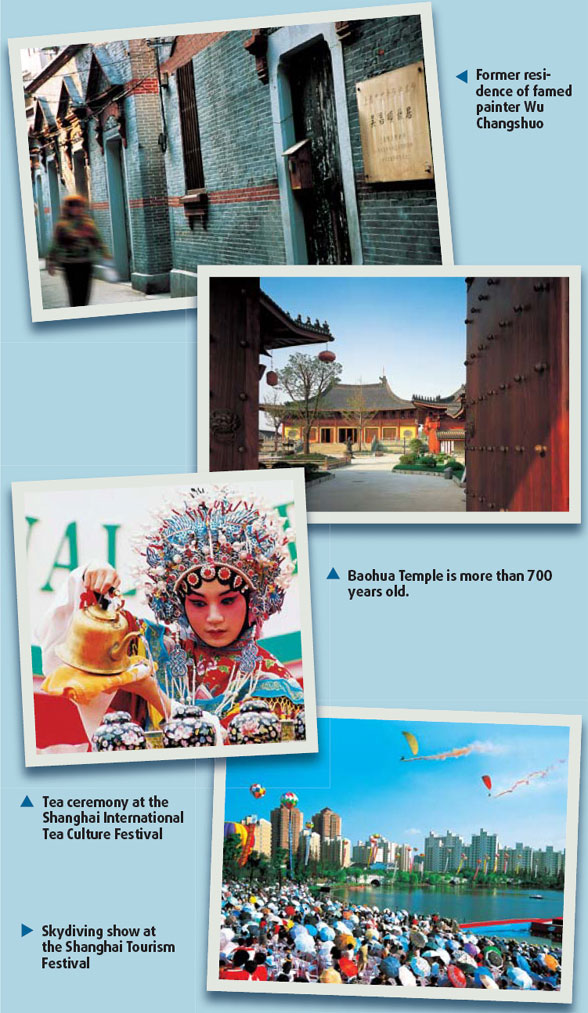Tourism still thriving in 'old' neighborhood
Widely known for its industrial output, the Zhabei district of Shanghai also has a thriving industry that may surprise some - tourism.
Home to historical sites and famous old buildings, the area played a vital role in Shanghai's story. The interest and charm of the district attracts tourists from home and abroad who come to see first-hand well known streets and companies, such as Commercial Press, the Oriental Library and Baoshan Road, all a part of a bright page in Shanghai's modern history.
Latest statistics show annual revenues from tourism in Zhabei district reach 1.6 billion yuan.
Located in the center of the city, Zhabei offers a well-developed transportation system, including Shanghai's main railway station and long-distance bus terminal that facilitate the flow of visitors.
During the Shanghai Tourism Festival every year, displays of fireworks and skydiving performances in Zhabei attract many tourists from across the globe.
Travel agencies also play their part, ranked in the first three positions in China for the last three years.
No 2 on Baoshan Road of Zhabei district is the site of the Shanghai Workers' General Union established on May 30, 1925. More than 80 years ago, under the leadership of the general union, citizens from various circles staged strikes as workers, students and merchants protested Kuomintang rule.
Sixing warehouse, north of Suzhou Creek, was once a battle scene where 800 Chinese soldiers fought Japanese invaders. It is remembered as an important victory by Chinese troops in the early days of the War of Resistance against Japanese invasion.
No 155 on Gonghexin Road of Zhabei district is the former residence of Song Jiaoren, director of legislative assembly at that time. In March 1913, Song was assassinated by Yuan Shikai, president of the autocratic government, because he advocated a cabinet in the government to stop the dictatorship of the president.
A year later the government expanded the size of his residence and built a cemetery garden for Song near the family home.
After the founding of New China in 1949, the residence and cemetery garden have become a center for patriotic education to teach young people history and knowledge about the revolutionary martyr.

(China Daily 05/08/2008 page18)














